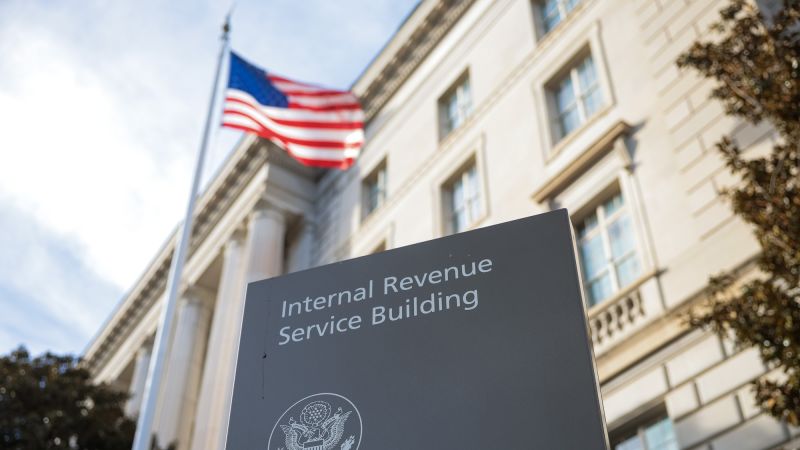—
No one wants to pay taxes, and practically every American dislikes the IRS. But, as the saying goes, the only guarantees in life are death and taxes. So the IRS is here to stay.
Right?
Well, maybe not, according to Commerce Secretary Howard Lutnick.
“Donald Trump announced the External Revenue Service, and his goal is very simple: to abolish the Internal Revenue Service and let all the outsiders pay,” Lutnick said on Fox News Wednesday night.
In other words: America will raise so much money from President Donald Trump’s tariff plan that Americans will no longer need to pay income taxes.
It sounds great. But it’s riddled with problems.
America raises about $3 trillion each year from income taxes. The United States also happens to import around $3 trillion worth of goods annually. So that means tariffs would have to be at least 100% on all imported goods for tariffs to replace income taxes, said Torsten Slok, chief economist at Apollo Global Management, in a note to investors Thursday.
But replacing all that tax revenue is not even as simple as doubling the price of everything that comes into America, Slok notes: If you remember your Econ 101 class, as prices rise, demand trails off. Just ask Walmart, which said Thursday morning it expects sales growth to slow this year because of Americans’ concerns about high prices and tariffs.
So the government would have to find the right fulcrum point to balance its revenue needs with consumer demand. That could mean much higher prices.
“The challenge is that it is unclear what will happen to sales if all imported products double in price,” Slok said. “Given higher prices result in lower sales, it may require as much as 200% tariffs on all imported goods for the total tariff revenue to replace income taxes.”
So now we’re potentially talking about quadrupling the price of everything that comes into the country from overseas and across the border: cars, electronics, drugs, clothing, shoes, energy, you name it.
Even if consumers would accept much higher prices in exchange for zero income taxes, the plan still faces another potential problem: One of Trump’s stated reasons for tariffs is to incentivize companies to make stuff in America. If that happens en masse, and imports fall through the floor, where will America’s revenue come from?
Corporate taxes may help make up some of the difference. But business’ taxes make up just 6% of all US tax revenue compared to 41% from individuals’ income taxes, according to the Tax Foundation. And Trump wants to lower the corporate tax rate.
So don’t hold your breath for your cut to Uncle Sam to suddenly disappear.
Nevertheless, Trump is doubling down on tariffs. On Wednesday night, he said his administration is considering a 25% lumber tariff in addition to tariffs on autos, chips, pharmaceuticals and potentially other goods following a review period that is expected to conclude on April 1. He has also proposed dollar-for-dollar reciprocal tariffs. Next week, 25% tariffs on all goods from Canada and Mexico are set to go into effect, and he has already imposed tariffs on steel, aluminum and a 10% tariff on all goods coming from China.
For a little over a month, Trump has been floating his “External Revenue Service” concept. The cleverly named new government office first appeared in a Truth Social post five days before his inauguration. It got a mention in Trump’s inaugural address and was included in one of the first executive orders Trump signed on his first day in office.
But other than collecting tariff revenue, it hasn’t really been clear what the ERS’ purpose was. Even after Lutnick’s comments, it’s still not — the executive order instructs the Secretaries of Treasury, Commerce and Homeland Security to investigate whether it would be possible to establish the ERS to “collect tariffs, duties, and other foreign trade-related revenues.”
Meanwhile, the IRS is expected to fire about 6,000 workers Thursday, according to a source familiar with the agency’s plans. The IRS workers set to be fired are described as largely auditors and support workers involved in compliance work — but the layoffs are still coming in the middle of tax season.
CNN’s Katelyn Polantz contributed to this report.



